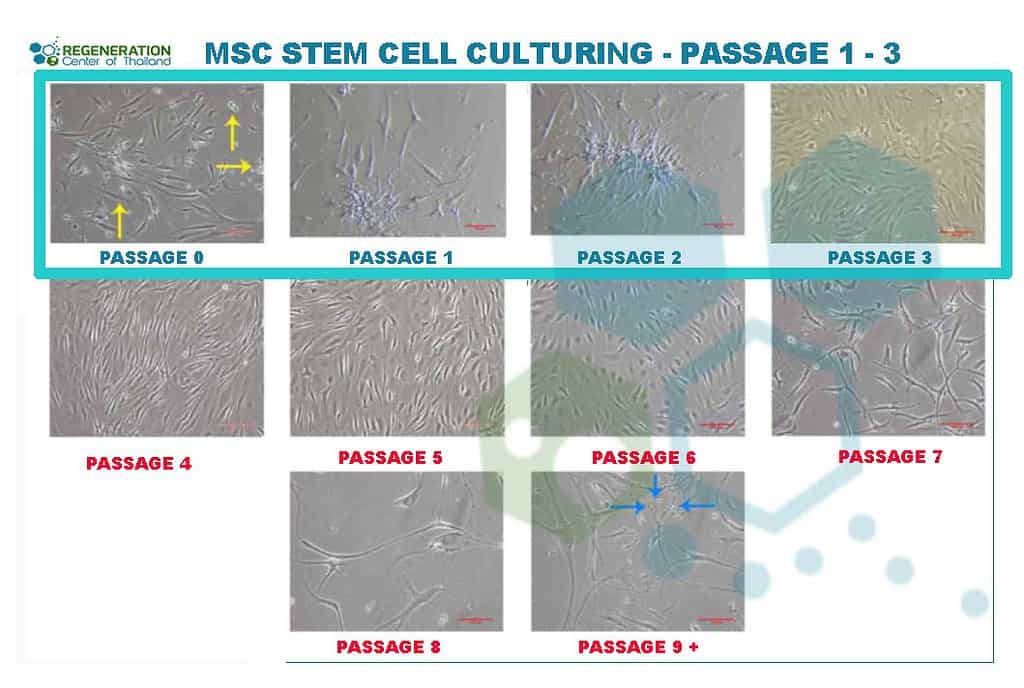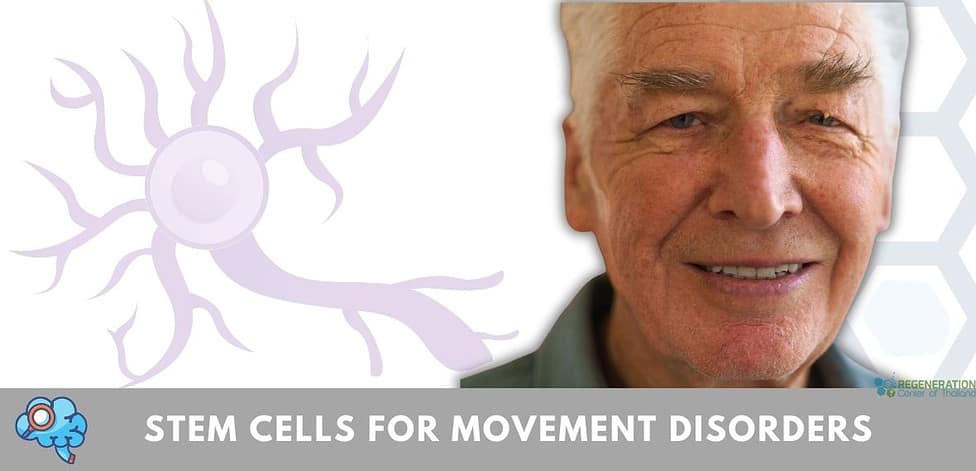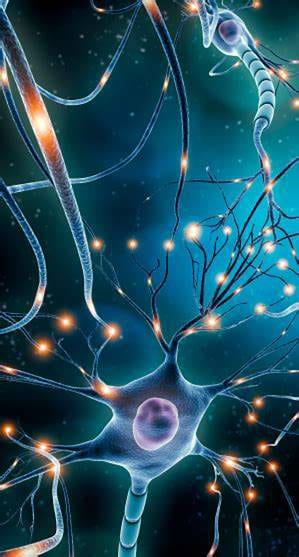Movement disorders are a group of neurological conditions that affect the ability to control movement, causing symptoms such as tremors, stiffness, slowness, and involuntary movements. These disorders can significantly impact a person’s quality of life, making daily activities challenging. However, with advancements in medical research, new treatment options are emerging, offering hope to those living with movement disorders. Let’s explore the various movement disorders and the latest treatment options at the Regeneration Center today.[1]
 Types of Movement Disorders
Types of Movement Disorders
- Parkinson’s disease is one of the most common movement disorders, affecting millions of people worldwide. It is characterized by tremors, rigidity, slow movement (bradykinesia), and balance problems. The exact cause of Parkinson’s disease is unknown, but it is believed to involve a combination of genetic and environmental factors.
- Essential tremors are a neurological disorder that causes involuntary shaking or trembling, most commonly in the hands. They can also affect the head, voice, legs, and trunk. Essential tremors are often mistaken for Parkinson’s, Alzheimer’s, or dementia, but unlike Parkinson’s, they do not typically cause stiffness or slow movement.
- Dystonia is a movement disorder characterized by involuntary muscle contractions that cause repetitive or twisting movements and abnormal postures. It can affect a single body part (focal dystonia) or multiple areas (generalized dystonia). Dystonia can be inherited or acquired, and an idiopathic diagnosis can result in the destruction of neutrophils, myelitis, and aphasia.
- Ataxia is a neurological sign of a lack of voluntary coordination of muscle movements, including gait abnormality, speech changes, and abnormalities in eye movements. Ataxia is a clinical manifestation indicating dysfunction of the parts of the nervous system that coordinate movement, such as the cerebellum. Ataxia can be limited to one side of the body, which is referred to as hemiataxia.
- Huntington’s disease is a rare, inherited disorder that causes progressive breakdown of nerve cells in the brain, leading to uncontrolled movements, emotional problems, and cognitive decline. It is caused by a defective gene that produces an abnormal protein, accumulating in the brain and damaged nerve cells.
Diagnosis and Evaluation of Movement Disorders
Diagnosing movement disorders involves a comprehensive evaluation by a neurologist or movement disorder specialist. The evaluation thoroughly reviews the patient’s medical history, physical examination, and neurological assessment. Additional tests, such as brain imaging (MRI or CT scan), blood tests, and genetic testing, may be performed to rule out other conditions and identify the specific type of movement disorder.[2]
Traditional Treatment Options
- Medications are often the first line of treatment for movement disorders. The specific medication prescribed depends on the type and severity of the disorder. For Parkinson’s disease, levodopa (L-dopa) is the most commonly used medication, which helps increase dopamine levels in the brain. Other medications, such as dopamine agonists, MAO-B inhibitors, and anticholinergics, may also be used to manage symptoms and brain fog.
- Deep brain stimulation (DBS) is a surgical procedure that involves implanting electrodes in specific brain areas to regulate abnormal brain activity. DBS has shown promising results in treating advanced Parkinson’s disease, essential tremor, and dystonia. The procedure is reversible and adjustable, allowing personalized treatment based on the patient’s response.
- Focused ultrasound is a non-invasive treatment option that uses high-intensity focused ultrasound waves to target and destroy specific areas of the brain responsible for movement disorders. It is currently approved for the treatment of essential tremors and is being studied for its potential use in treating Parkinson’s disease, brain strokes, cervical spine injury, and dystonia.[3]
- Gene therapy is an experimental treatment approach that introduces healthy genes into the body to replace or modify the function of defective genes responsible for movement disorders, spinal muscular atrophy, autism, cerebral palsy, and inclusion body myositis. While still in the early stages of research, gene therapy holds promise for treating inherited movement disorders such as Huntington’s disease.

Stem Cell Therapy: A Promising Frontier in Movement Disorder Treatment
Stem cell therapy is emerging as a promising frontier in treating movement disorders. This innovative approach involves using stem cells, which are unspecialized cells capable of developing into various types of cells, such as astrocytes and neural stem cells. They can help regenerate lost cell signaling and neurotransmitters, replace damaged nerve cells, and promote neurogenesis. The Regeneration Center is at the forefront of regenerative medicine by exploring the potential of stem cell therapy for treating a range of movement disorders and multiple system atrophy. The goal is to use stem cells to restore the function of the damaged or lost neurons responsible for controlling movement. One approach involves isolating and expanding UC-MSC stem cells and neural cell-specific growth factors. We can achieve better results by reprogramming them and differentiating them into dopamine-producing neurons, which can be transplanted into the brain to replace the lost cells in patients with these diseases.[4]
TREATMENT RISKS & PRECAUTIONS
Please note that not all patients with Movement Disorders are suitable candidates for treatment with stem cells. Individuals with severe complications related to Movement Disorders, advanced motor impairment, severe tremors, rigidity, or respiratory complications might not be good candidates for this 1-2 week therapy.While stem cell therapy is still in the early stages, clinical trials have shown promising results in improving motor function and reducing symptoms in some patients with movement disorders. The Regeneration Center is committed to finding solutions and believes more long-term stem cell research will be needed to establish the long-term safety and efficacy of neural stem cell therapy and refine the techniques for generating and transplanting the cells and growth factors required for successful treatments. As our research progresses, stem cell therapy may offer new hope for individuals living with movement disorders, providing a means to restore function and improve quality of life.
Neural Stem Cells Communicating
Lifestyle Modifications and Support
In addition to medical treatments, lifestyle modifications, brain friendly diets, and support play crucial roles in managing movement disorders. Regular exercise, physical therapy, and occupational therapy can help improve mobility, balance, and daily functioning. Speech therapy may be beneficial for those with speech and swallowing difficulties. Support groups and counseling can provide emotional support and coping strategies for individuals and their families.
Stem Cells for Movement Disorders – 2025 Guidelines
The goal of stem cell therapy for movement disorders is to alleviate the patient’s symptoms and restore any lost neurological or physical function. Most treatments are outpatient, and transplanting stem cells are non-invasive and painless [5]. Stem cell therapy may not be an appropriate treatment option for all cases. Still, for those that qualify, the cells are commonly delivered through the combination of Intravenously, stem cell nebulizers, Intrathecal Injections, or fluoroscopy guidance delivery (in a hospital setting only) of stem cells to bypass the blood-brain barrier.
If you would like to learn more about how functional medical therapies can be applied to treat movement disorders or if you have any other questions, please contact us today.
Published Clinical Citations
[1] ^Mestre TA, Bhidayasiri R. Introducing the new “Movement Disorders Rounds.” Parkinsonism Relat Disord. 2018 Oct;55:1. doi: 10.1016/j.parkreldis.2018.09.024. PMID: 30396637.
[2] ^ Jagota P, Lim SY, Pal PK, Lee JY, Kukkle PL, Fujioka S, Shang H, Phokaewvarangkul O, Bhidayasiri R, Mohamed Ibrahim N, Ugawa Y, Aldaajani Z, Jeon B, Diesta C, Shambetova C, Lin CH. Genetic Movement Disorders Commonly Seen in Asians and Thailand. Mov Disord Clin Pract. 2023 May 8;10(6):878-895. doi: 10.1002/mdc3.13737. PMID: 37332644; PMCID: PMC10272919.
[3] ^ Pandey S, Chouksey A, Pitakpatapee Y, Srivanitchapoom P. Movement Disorders and Musculoskeletal System: A Reciprocal Relationship. Mov Disord Clin Pract. 2021 Dec 16;9(2):156-169. doi: 10.1002/mdc3.13390. PMID: 35146055; PMCID: PMC8810446.
[4] ^ Mochizuki H, Choong CJ, Yasuda T. The promises of stem cells: stem cell therapy for movement disorders. Parkinsonism Relat Disord. 2014 Jan;20 Suppl 1:S128-31. doi: 10.1016/S1353-8020(13)70031-2. PMID: 24262163.
[5] ^ Steward MM, Sridhar A, Meyer JS. Neural regeneration. Curr Top Microbiol Immunol. 2013;367:163-91. doi: 10.1007/82_2012_302. PMID: 23292211.


 Types of Movement Disorders
Types of Movement Disorders